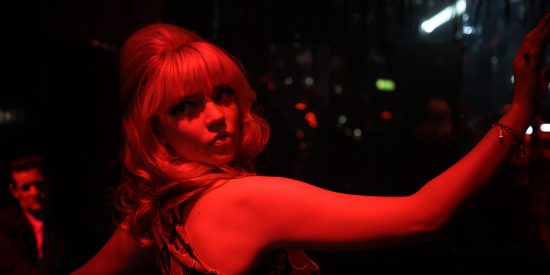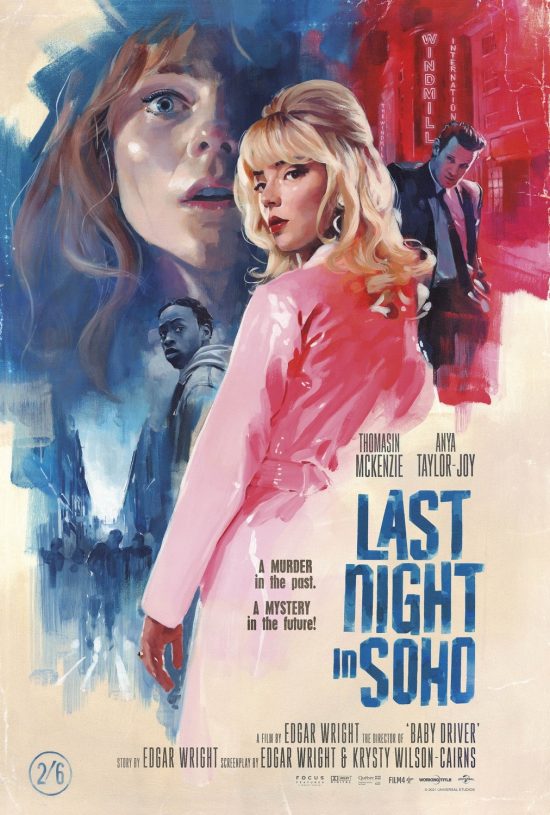Review: Last Night In Soho – “Unexpected twists and turns”
Thomasin McKenzie stars as Eloise/Ellie Turner, a naive and idealistic Cornish girl who travels to London to chase her dream of becoming a fashion designer. From the moment she arrives, a mixture of predatory men and snobby, cattish girls open her eyes to the harsh realities of life in the big city.
Fleeing her student dorms, Ellie rents a room in the home of an elderly landlady, played by Diana Rigg. It is here that she begins to experience recurring visions of another life in another time, namely that of Anya Taylor-Joy’s aspirant singer Sandie in the Swinging Sixties Soho, which Ellie is obsessed with. Feeling alienated from those around her, Ellie seeks refuge in this dream world but, through Sandie, she witnesses the dark, seedy reality beneath the glitz and glamour: strip clubs, violence, prostitution, and Cilla Black. When this violence culminates in murder, Ellie believes the perpetrator may still be at large, decades later. Her behavior grows increasingly erratic as she becomes haunted by ghostly figures from the past, and the audience is left wondering how much is real and how much is all in Ellie’s mind.
The movie is darker in tone and lacks the obvious humor of Edgar Wright’s earlier work, even one that deals with The World’s End. There is a whole subgenre of London literature, however, within which this movie does sit neatly – that of the psychogeographical uncanny, whereby certain locales within the city affect the behavior and emotions of the protagonists, the capital’s dark history seeping out of the brickwork in supernatural ways.
Several key elements of the genre are present here: The concept of perfect strangers seemingly able to communicate or influence each other through time runs from the work of Peter Ackroyd to Si Spencer’s graphic novel Bodies (adapted for Netflix last year and in which Michael Jibson also appears as a detective). The dismissal of Ellie’s preternatural gifts as a sign of mental illness recalls the treatment of the lead characters in Michael Moorcock’s Mother London, a central work within the genre. And the spirits who chase and threaten to drag Ellie down into the darkness, as the line between the two worlds becomes increasingly blurred, bring to mind the figures from Conrad Williams’ London Revenant.
The movie is not without occasional light-hearted moments. Fellow student John offers hope that not everybody in the city is entirely selfish or out to get her. There is a lot of great 60s music, and some fantastic dancing, most notably when Sandie first meets Jack, played by Matt Smith. Smith seems to relish playing roles with an air of menace post-Doctor Who, which appears to be a trend: the ninth, tenth, and eleventh Doctors all went on to play Marvel villains, while the twelfth skipped over to DC. (Personally, I found Jon Pertwee’s Worzel Gummidge the most terrifying of all).
There are omens scattered throughout the movie that foreshadow the events of the final quarter, as well as unexpected twists and turns, and a sense of genuine peril. There’s also a fantastic use of lighting, particularly red light which alludes to Soho’s association with the sex industry. Indeed, as the movie progresses towards its conclusion and the screen is bathed in a crimson hue, more blood is graphically spilled, and even Diana Rigg’s dark red lipstick seems to capture the camera’s focus, the title of another classic work of London literature is evoked: Sir Arthur Conan Doyle’s A Study in Scarlet.











